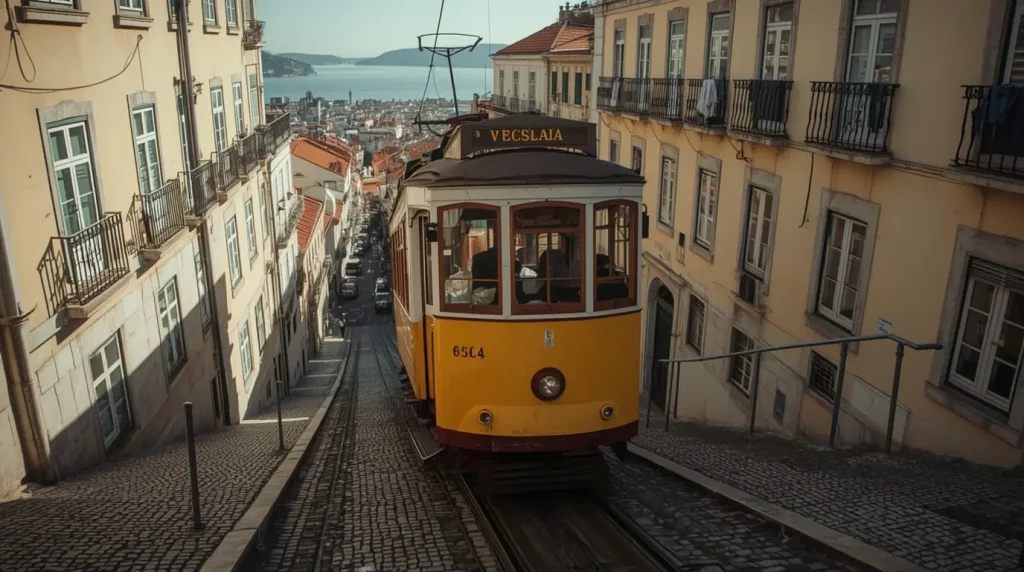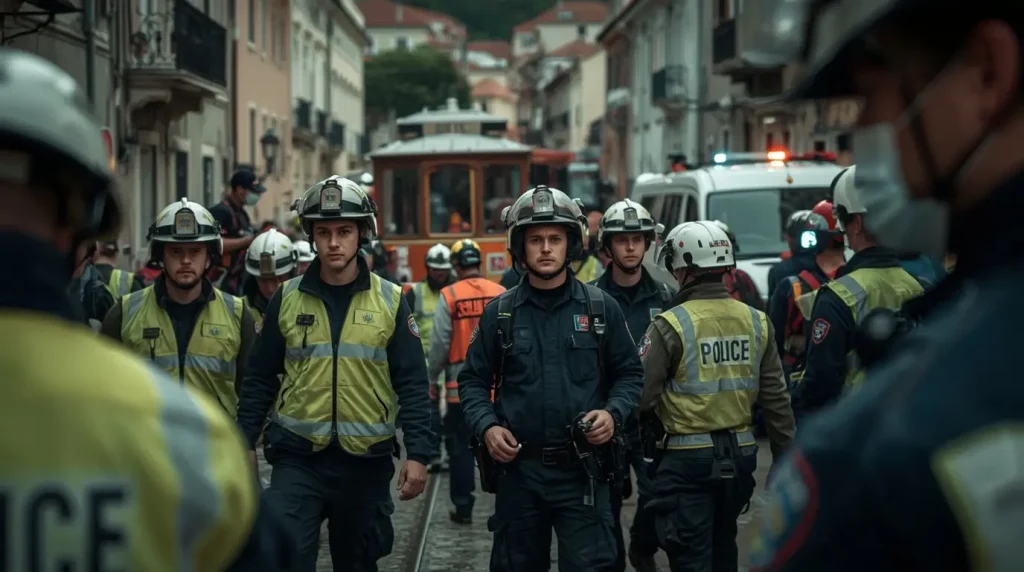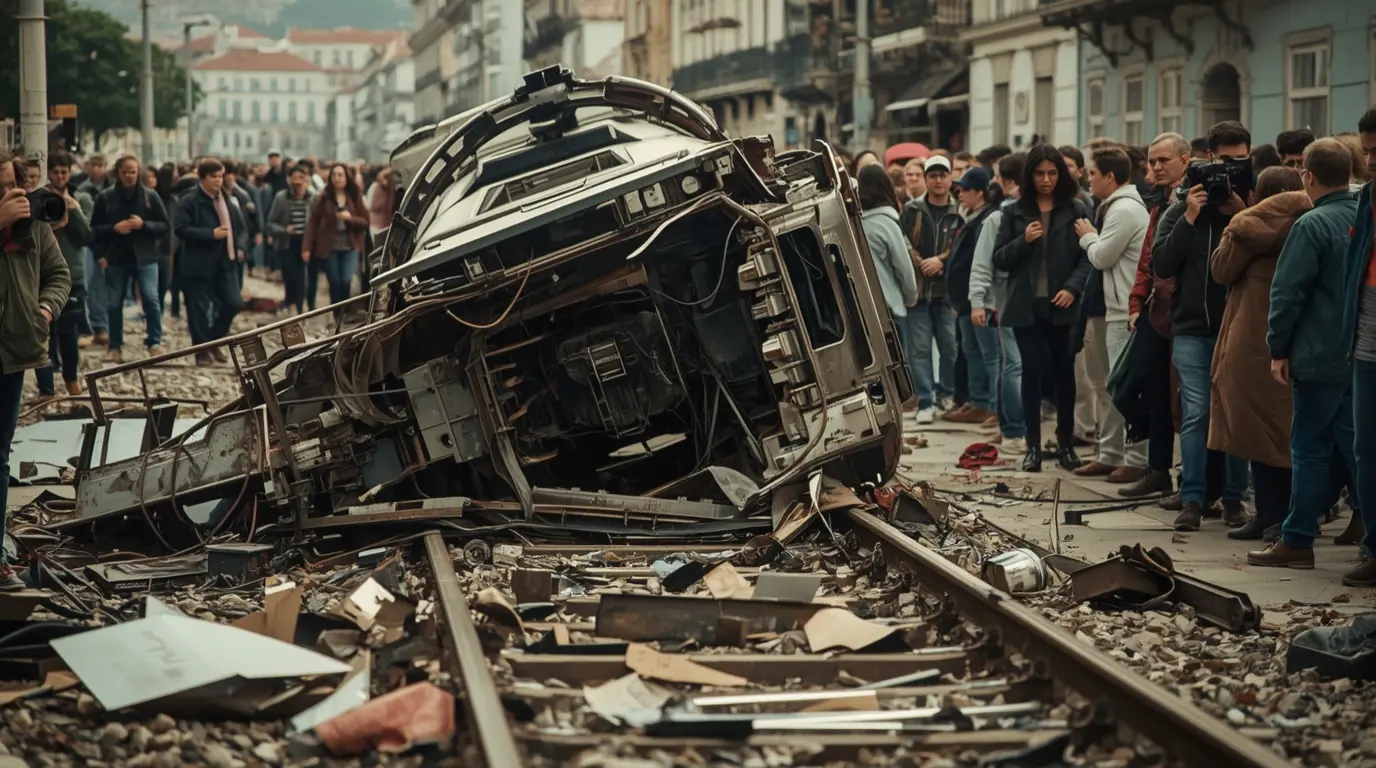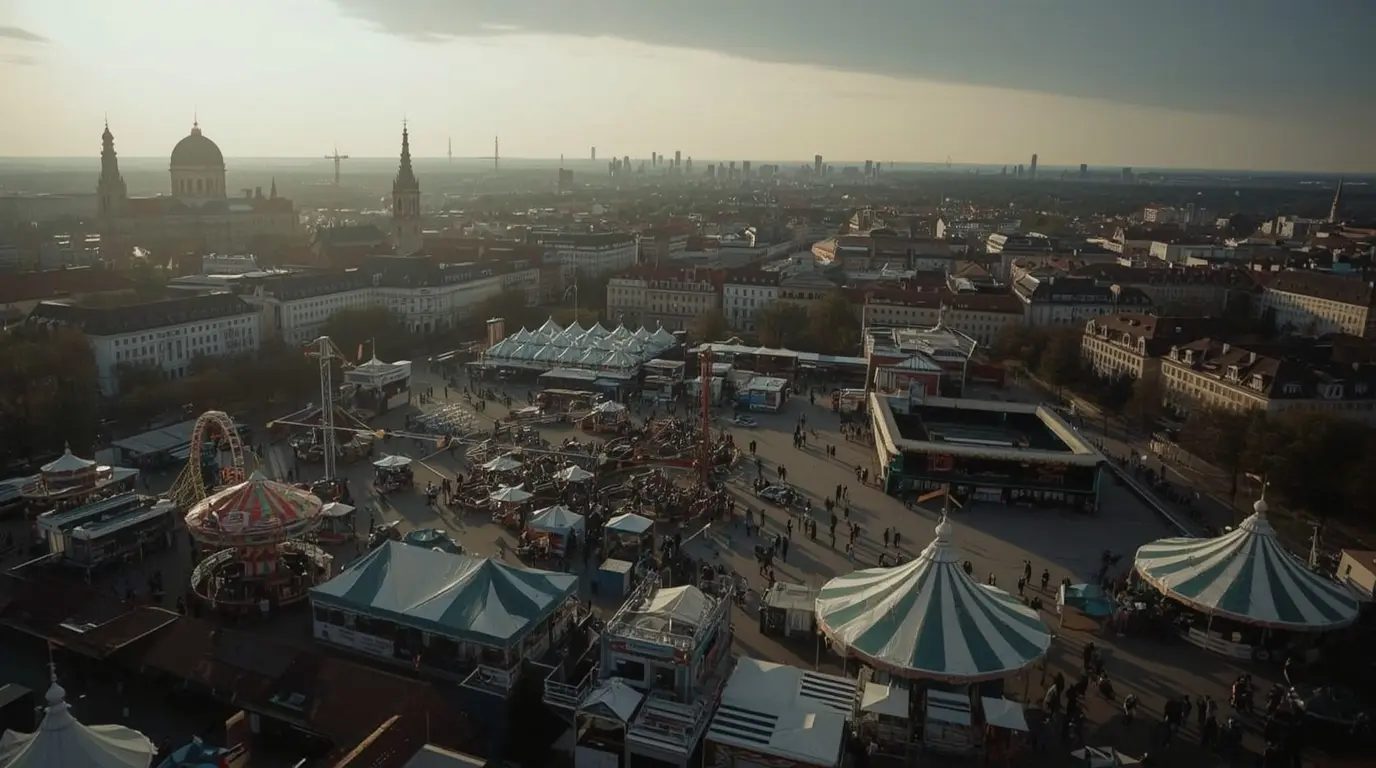Introduction: Lisbon’s Moving Monument
The Glória funicular is Lisbon’s hidden treasure, a working museum that still ferries city-dwellers uphill like it did back in the 19th century. Rising, falling, and creaking through the heart of the city, it links the bustling Restauradores Square to the Bairro Alto’s cobblestone terraces, where sunset views await. One of the last two still-ticking funiculars in a city that loves a steep climb, Glória is loved for its everyday purpose and its whisper of another era.
When Lisbon’s full funicular network paused last summer, the city learned to miss these short and sweet uphill rides. Glória caught the spotlight, reminding everyone that hills and charm are part of the same package. This handy guide peeks under the hood of Glória, telling its backstory, sharing the nuts-and-bolts secrets that keep it rolling, and puzzling through the trade-offs that keep a city looking ahead without losing its heart.
Historical Development: 140 Years of Innovation
The Glória tale kicks off in 1885, the summer Lisbon decided steep streets weren’t a problem, they were a project. As charming as the hills are, they’re a cyclist’s nightmare and a trolley’s dream; locals learned this every time they chose between panting uphill and falling downhill. So, a brass and timber prototype was born— a coin-sized revolution in a toppled world, a system where two caricatures of cars wrestled up the slope by taming gravity with the counterweight of tall wooden barrels filled with water.
In 1886, only twelve months after welcoming its first passengers, the Gloria funicular moved to steam power, a sign of the breathtaking speed of change in the industrial age. Switching to steam made every ride faster and steadier, but the biggest leap forward came from 1914 to 1915, when clever engineers fitted the cars with electric motors. That new energy source became the core of the line and served it faithfully for the next hundred years.
In 1997, the Portuguese government officially acknowledged the funicular’s quiet but lasting greatness by declaring it a national monument. The title celebrates both the way its iron and timber lines stretch elegantly through the city and the part it plays in Lisbon’s soul as a living reminder of the city’s decades of growth. The Gloria funicular has ridden through more than a century of change, watching parliaments shift, machines advance, and neighborhoods change shape, yet it has held onto its original charm and the very same duty—to carry people up the steep hillside, spirits always higher.
Technical Marvel: Engineering Behind the Gloria Funicular
The Gloria funicular is powered by the time-tested counterbalanced funicular system. Two cars stay clipped to opposite ends of a strong haulage cable. The cable runs over a smooth pulley wheel at the summit. As one car rolls down the track, stairs of the mountain, its weight pulls the car on the opposing track up, cooking on low energy and on haute efficiency.
Here are the key statistics that jump out at engineers and visitors alike:
- Track Length: 275 meters (902 feet)
- Gradient: 17.7 percent incline
- Journey Time: Around 3 minutes
- Capacity: 43 passengers per car
- Operation: Classic counterbalanced cable system
- Power Supply: Electric current ever since 1915
Safety on the funicular is a bigger deal than the grand views. The braking system is the unsung hero. Multi-layered safety brakes wait ready to jump into action if the track ever pulses into the place of danger. Brakes are back and brain: one part is a mechanical system, another part is electrical, and together the pair has been patched, pressed, and upgraded for over a hundred turnarounds of the calendar.
Routine upkeep is a must to keep Lisbon’s Gloria funicular running safely and smoothly. Carris, the city’s transit authority, sticks to a strict maintenance calendar. Workers check the line and cars every week; every month, they dive into more detailed inspections, and every four years, the system gets a full overhaul. Following this schedule allows the 19th-century system to safely use 21st-century technology while keeping its vintage charm intact.
Cultural Icon: How the Gloria Funicular Became Lisbon’s Soul

More than a way to climb the city’s steep hills, the Gloria funicular is a cherished symbol of Lisbon. Those bright yellow trams, climbing the narrow streets, top every postcard, are in almost every tour book and show up in movies and paintings around the world. Visitors think of Lisbon and picture the cars whizzing up Calçada da Glória.
Connecting tourists to the city’s past and present, a ride on the funicular is a must. It takes just three minutes, yet the views are unforgettable: pastel-colored buildings, intricate tiles, and the Tagus River shimmering in the distance. About 3 million people board the funicular each year, and while it is a top attraction, it still helps Lisbon residents on their daily commutes.
The Urban Soul of the Gloria Funicular
More than just a steeper-than-usual slide for tourists, the Gloria funicular has embedded itself in everyday Portuguese life. It zooms past poets’ favorite cafés, painters’ former studios, and songwriters’ always-open tavernas. For locals, a ride isn’t a ride; it’s a brief passage through a city poem in continuous revision. It has the patina of history and the giggles of everyday people, and so it sticks to the city’s ribs, forever beloved.
Practical Beauty in Steep Streets
Once the answer to a very steep problem, the Gloria now thinks of itself as a wise aunt helping the next generation find their footing. It hooks up to the subway like a wise guide leads the inexperienced tourist to the best midnight pastel de nata. The cars heave their way through htmlentities of bright azulejos, burritos of history and hyper-speed commuters, and just keep going. Lisbon skyline demands curves, and the Gloria, with its art-nouveau beauty, just gives the city another curve to flirt with.
Over the years, the story has changed around it. Grand balconies turned into pastel licorice shops, and austere stoops flower into galleries. Yet the Gloria still rides a track forged in the age when Wikipedia was still children’s sleep-lore. It bumps a little louder now, but what city hasn’t gained a new creak or two? Rather than fade, the tram just collects stories like fresh graffiti: old, new, and always up for a chat with the next passenger.
City planners and preservationists have their hands full making sure the Gloria funicular stays true to its past while still fitting into today’s busy city. Every choice about fixing, upgrading, or running it has to juggle old-world charm and 21st-century safety. That’s not something any one person can do alone. Engineers, architects, historians, and urban planners blend their know-how to reach the right solutions.
Maintenance and Preservation: Caring for a Moving Monument
The Gloria funicular is like a statue that still gives rides. Treating it like a living monument is tough. Technicians need to keep its vintage looks while making sure it works the way the law says it should today. They keep one foot in the past and the other in the present. That takes a fascinating mix of old-school train wisdom and today’s safety know-how.
Here’s how the crew keeps the funicular rolling:
- Every morning before the first passenger steps onboard, operators check every visible part.
- Every week, the motors, brakes, and sheaves get a test to catch any wear.
- Every month, a larger checklist runs through every nut, bolt, and wire.
- Every six months, busy mechanics handle repairs that can wait, swapping out parts and tuning the drives.
- Every four years, the system closes for a deep-dive examination. Engineers strip it to the frame, test every wire and pulley, and install any upgrades the latest rules demand.
Those steps keep the funicular both busy and museum-worthy. Technicians undergo special training that teaches three things: the quirks of hundred-year-old mechanics, today’s safety and inspection rules, and how to blend the two without a hitch.
Preservation efforts for the Gloria funicular go beyond fixing gears and tracks. Workers focus just as hard on keeping the carriages looking and feeling the same way they did over a century ago. The funicular’s glossy yellow paint, hand-carved wooden panels, and brass fixtures all demand treatments that the original builders would recognize. By using old-school recipes and methods, visitors aren’t just taking a ride—they’re stepping into a lively chapter of the city’s history.
Big Picture: How Gloria Fits into the World of Funiculars
In cities with steep streets, rickety stairways just won’t cut it. Around the globe, urban funiculars pop up to move people up and down hills. Notable examples include:
- Cable cars that rattle and ding through San Francisco.
- Budapest’s zigzagging funicular that runs up to the Royal Palace.
- Hong Kong’s Peak Tram, where hills loom close on each side of the tracks.
- Naples, where a maze of funiculars weave tunnels through hillside neighborhoods.
- Santiago’s ascensores, colorful cliff elevators that rise fast and loud.
These cities face the same puzzles that keep the Gloria team awake at night. They must balance the antique charm that tourists love with the steel-cable brakes and emergency stops that modern codes demand. They cater to families with cameras and grandmas with groceries, all while tucking the old structure into crowded modern streetscapes.
What sets the Gloria apart is that it hasn’t skipped a beat. For 140 years, the same little steel and wood cars—with the same torque gears and same steep angles—have traveled the same climb. This living museum of wheels and tracks shows urban planners the secret: legacy railways can still work, as long as the city helps them manage evolving safety, tourism, and neighborhood needs.

Future Prospects: Preserving the Gloria Funicular for Coming Generations
The Gloria funicular’s future rests on the delicate art of blending preservation and progress. New technology offers ways to boost safety and performance without dulling the vintage charm that draws visitors and locals alike. Possible future updates could feature:
- Modern sensors to flag potential safety issues before they occur
- Subtle ramps and handrails that enhance accessibility yet keep the original look
- Upgraded motors and brakes designed to cut energy use while maintaining the system’s timeless rhythm
- Real-time apps and displays that guide riders without cluttering the car’s period interior
- Workshops and narrated rides explaining how iron and stone conquered Lisbon’s steep hills
Whatever the upgrade, the guiding rule is restraint. The funicular is more than a ride; it’s a memory carved into the city’s topography. The car’s oak seats, brass controls, and wavy iron balustrades have survived wars and storms. Modern fixes must slip in and out as quietly as the cars themselves, preserving the same click, whirr, and lurch that generations have cherished.
Education is another strand of the Gloria funicular’s 21st-century plan. Hands-on exhibits, school-group discounts, and free guided rides connect visitors to the engineering vision that solved a wicked geography problem more than a century ago. The funicular stands as living proof that beauty and smart design can coexist. By sharing that story, Lisbon ensures that the mountain of memories continues to rise with the rider in every car, from grandparent to grandchild, ready for the city’s next century.
Conclusion: A Journey Through Time
The Gloria funicular is more than just a ride to the top; it is a moving storybook of Lisbon. For 140 years, it has carried both locals and travelers, inviting everyone to look back at the city’s past and to marvel at the engineering that made the steep hills feel a little less steep. As the old tram leaves the boarding platform, it pulls centuries of Lisbon’s history skyward, one cab packed with living memory at a time.
Every lurching upward motion is matched by the careful hands of today’s mechanics, artists, and riders. These preservation efforts show that Lisbon doesn’t just respect its past; it talks to it. Disabled cables are rewound, old tiles are carefully repaired, and the original seuó melodies play once again. By choosing to keep the funicular active—instead of hiding it in a museum—the city hands future riders the same thrill it once handed to tourists with petticoats and to clerks of the Confederation of Lisbon.
Cities from Lisbon to Tokyo are asking in council chambers and coffee shops the same hard question: “How do we respect who we were, while building who we need to become?” The answer rides the tracks of the Gloria funicular , still outside the museum and still under the sky, still rolling higher and higher.
When you ride the Gloria funicular, you’re doing more than catching a lift up a steep hill. This colorful cable car is a piece of living history, a ride that climbs through time as much as through the tight streets of Lisbon. Built back in 1885, its bright wooden carriages have carried locals and visitors up and down the hill for more than a century, whispering stories of street musicians, students, and sunset-seekers in every squeak of the tracks. Yet it’s more than a charming throwback; it’s a real engineering jewel, and it keeps shining bright, even as flights of fancy turn into flights of steel and glass.
The Gloria funicular is a reminder that real innovation isn’t always the newest gadget, but the courage to blend the clever with the beautiful and let both carry city and soul together into the future.
Source: https://edition.cnn.com/2025/09/03/europe/lisbon-funicular-crash-latam-intl
For more incredible stories of everyday news, return to our homepage.





